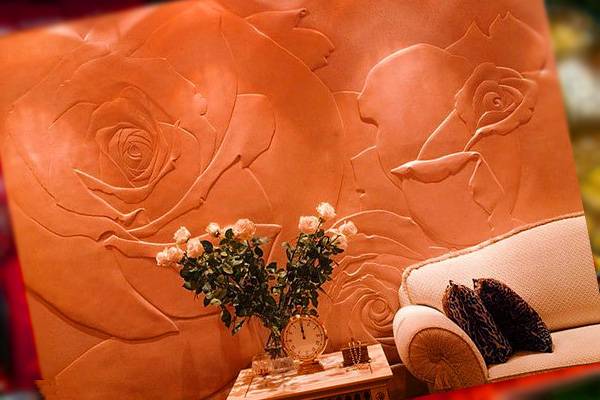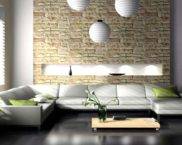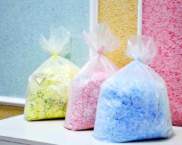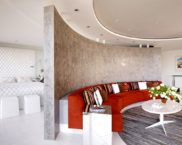Textured plaster for walls: photo, video application technology
Increasingly, in city apartments and private houses, instead of wallpaper on the walls, you can see a wide variety of design solutions made with various materials. Unusual textured plaster for walls also attracts attention (photos, videos on installation will be presented below). This material is able to bring to life any volumetric drawings, even whole paintings can be recreated by applying such plaster to the wall.
The content of the article [Hide]
What is textured plaster for walls: photos, videos of interesting application options
Diversity decorative plaster striking. The base includes water, binders, additives and fillers (thickeners, etc.). The composition may vary, and even at home you can prepare such a solution.
Textured plaster for walls, a photo, a video about which is presented on the Internet in large quantities, can be divided into three main subtypes:
At the same time, textured plaster is different in result, that is, a finished surface in the form of granite, rain can be obtained, used under a roller and other options. This is also worth considering when choosing a material.
To make it easier to choose, below are photos and videos about textured plaster for walls:

Related article:
Prices for textured plaster for walls
Textured plaster is a popular and affordable option, where wood fibers, small stones and mica are used as fillers. Such inclusions make the surface three-dimensional, which is inaccessible to wallpaper or paint. There are also many stamps and rollers on the market to make the job easier.
To buy textured plaster for walls, keep in mind that the cost of such material is calculated based on 1 m² of application to the surface. Here are some options with a photo.
Table 1. Average cost of textured plaster
You can make the wall decoration with textured plaster yourself or contact construction companies that are engaged in decor and interior decoration. Here are some interesting examples of design solutions using this material:
Textured plaster for walls: video how to apply the material yourself
It is not difficult to apply the material yourself, so everyone can cope with such a process. Let's look at step-by-step instructions with photo examples.
Table 2. Technology for applying plaster
In this simple way, you can independently apply a pattern to a wall in a house or apartment. Here is a video on the stages of work.

How to prepare textured plaster yourself
If you want to reduce the cost of the repair process, then you can prepare textured plaster from ordinary putty with your own hands, spending your time and effort on this, knowing exactly what the mixture is made of.
For work, prepare a putty, a deep mixing container, a trowel and spatula, a construction mixer (you can do with a stick), a metal grater and a bag to create a pattern.
To calculate the required amount of putty, pay attention to the packaging, which indicates the amount of mixture per 1 m². If you decide to buy the material in the form of powder, then additionally purchase some PVA glue. To dilute, take 2 liters of water, 200 g of glue and 6 kg of the mixture.
For the walls in the rooms, gypsum or cement plaster is suitable, and if you decide to update the bathroom, then stop the choice on the second option.
Then proceed in the same way as when applying the purchased textured plaster, the stages of which were described above. Here is a video that will help you understand how to make such material with your own hands.

Related article:
Patterning options
Textured plaster differs not only in the number of inclusions of small particles that give volume, and in color, but also in the option of creating the necessary pattern. You can use everything: from a brush to a paint roller.
Here are some variations of the patterns:
There are a lot of pattern options, you can create real paintings. Choose whatever you like and get creative.
Small photo gallery
Instead of conclusions about the dignity of textured plaster, which were given enough in the article, see the interesting works of real masters of design using this material:



















































